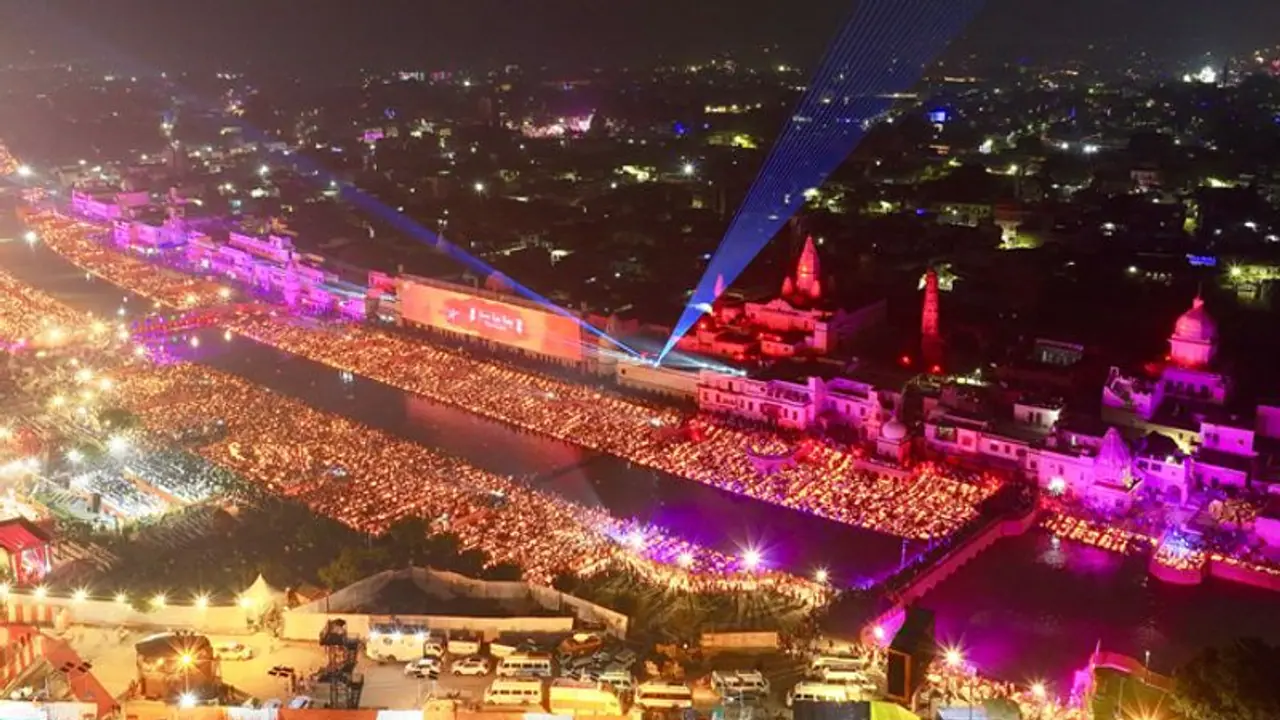As Ayodhya gears up for its eighth Deepotsav, potters are working tirelessly to meet the high demand for diyas. Chief Minister Yogi Adityanath has announced the lighting of 25 lakh lamps, making it the grandest festival yet.
Ayodhya: The annual Deepotsav celebration in Ayodhya has brought a remarkable transformation to the lives of local potters, who once struggled to make ends meet. Thanks to the initiative of Chief Minister Yogi Adityanath, the potters now earn as much as Rs 1 lakh each during the festive season.

With the increasing demand for traditional clay lamps (diyas), the younger generation of potter families, who previously sought work outside the village, are now embracing the craft, choosing to operate electric pottery wheels to meet the growing demand. In Jaisinghpur village, extensive preparations have already begun for the upcoming festival.
The transformation began in 2017, shortly after Yogi Adityanath assumed office as Chief Minister of Uttar Pradesh. One of his first initiatives was to revitalize Ayodhya, with a special focus on organizing Diwali and Deepotsav celebrations to mark Lord Ram's return from exile.
Held annually at Ram Ki Paidi, the event sees millions of oil lamps, or diyas, being lit. The CM also prioritized the district’s potters for diya procurement, ensuring that local artisans directly benefit from the event
As Ayodhya prepares for its eighth edition of Deepotsav, potters are ramping up production to meet the increased demand for diyas. This year holds special significance, with Lord Ram now seated in a grand temple, prompting the Chief Minister to announce the lighting of 25 lakh lamps, making this year’s festival the grandest yet.
In Jaisinghpur village near Vidyakund in Ayodhya, 40 families of potters are busy making thousands of diyas (earthen lamps) for the upcoming Deepotsav festival. They credit Chief Minister Yogi Adityanath for transforming their lives.
While Deepotsav has always brought sales, the government's push to support local potters has led to more people choosing traditional earthen diyas over electric lights.
Lakshmi Prajapati, a potter from Jaisinghpur, shared how the festival has brought new hope to her family. "The Yogi government's initiative has brightened our home. Once we receive the order for Deepotsav, the entire family comes together to make 30 to 35 thousand diyas, which we sell for the festival," she said.
Another potter, Rakesh Prajapati, mentioned that although they haven’t received a formal contract yet, they have already started making diyas based on previous years' orders. "Our income has increased since the Chief Minister's announcement," he added.
Asha, another villager, explained how the festival has revived traditional lighting. "Every year, we make 20 to 25 thousand diyas for Deepotsav. After the festival began, people in the city now decorate their homes with diyas instead of using Chinese lights," she said.
Rajesh Prajapati emphasized the impact the event has had on their community. "Thanks to CM Yogi, our work as potters is now recognized. Although the tender hasn’t been finalized yet, we’ve already made over 2 lakh diyas," he said.
With just a few days remaining, the countdown for the eighth edition of Deepotsav in Ayodhya has officially begun. The city is gearing up for another historic celebration, aiming to set a new record with its grand display of lights.
dministrative preparations are already in full swing. Alongside government officials, the Avadh University administration and its students have also joined the efforts, ensuring the festival runs smoothly.
A year-by-year record of lamps lit in Ayodhya
Since its inception in 2017, Ayodhya's Deepotsav has grown into a grand celebration of light and spirituality. Each year, the festival sets a new milestone with the increasing number of diyas (earthen lamps) lit along the banks of the Saryu River, symbolizing the return of Lord Rama to Ayodhya. Here's a look at the impressive numbers over the years:
2017: 1.71 lakh diyas
2018: 3.01 lakh diyas
2019: 4.04 lakh diyas
2020: 6.06 lakh diyas
2021: 9.41 lakh diyas
2022: 15.76 lakh diyas
2023: 22.23 lakh diyas
